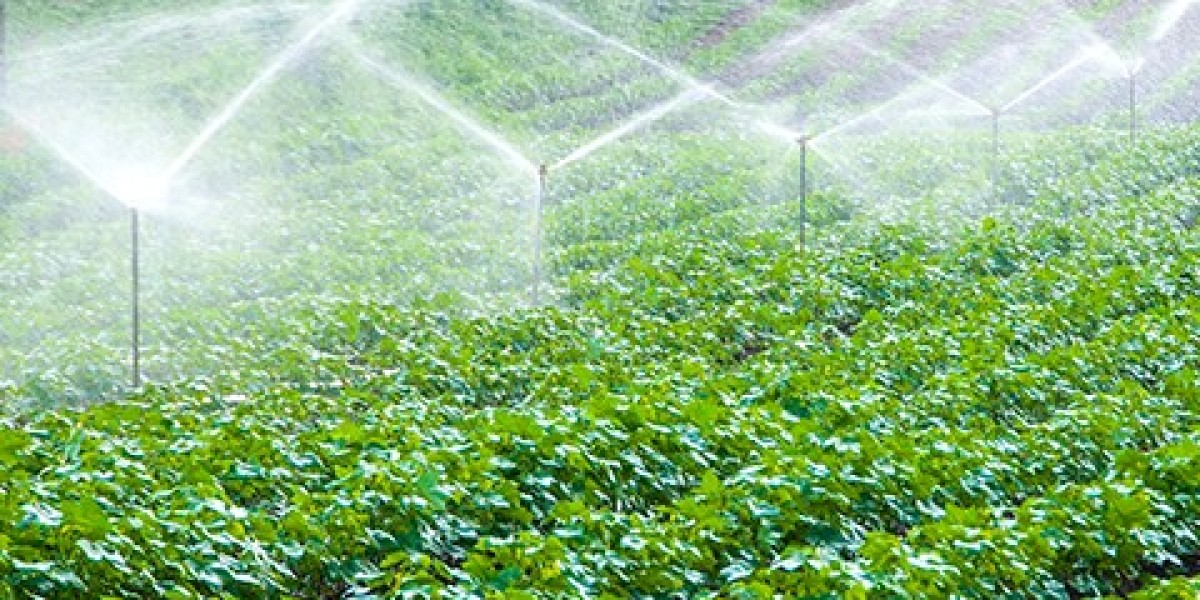How to Evaluate Quality While Selecting Sprinkler Manufacturers in India ?
Irrigation in India has come a long way. Not too long ago, many farmers depended mainly on flood irrigation, where large amounts of water were released across fields. While simple, it often wasted water and left parts of the field under or over-irrigated. With the introduction of sprinklers in agricultural irrigation, the story changed. Choosing the sprinkler with the right design can help spread water evenly while saving both time and the farmer's effort. It can basically mimic a natural rainfall.
But here’s the catch: not all sprinklers are created equal. Choosing the right product, and more importantly, the right sprinkler manufacturers in India, can be the difference between a smooth season and one filled with repairs and uneven watering.
What to Look for in a Manufacturer
When selecting sprinkler manufacturers in India, a few questions make all the difference:
What materials are used? Metal sprinklers made of brass, bronze, or aluminium last longer under the sun and resist corrosion better than cheaper plastics.
How reliable is the design? A good sprinkler should deliver uniform coverage across its radius, whether it’s a compact impact sprinkler for vegetables or a larger model for plantations.
Do they test in field conditions? Agricultural conditions vary widely across India and manufacturers who test in real farms usually produce more dependable designs.
What crops are they suited for? Reliable manufacturers list the crops each model can irrigate, so farmers don’t have to guess.
Full-Circle vs Part-Circle Sprinklers
Sprinklers usually come in two styles: full-circle and part-circle.
A full-circle sprinkler keeps turning round and round, throwing water across the whole 360°. It is a perfect if you have an open field, cereals, or big vegetable patches where you want every corner of the field to get the same share of water.
A part-circle sprinkler, on the other hand, can only cover a slice of the field. That way, you can avoid wasting water on roads, bunds, or empty corners. They’re especially handy in orchards or oddly shaped plots where a full round wouldn’t make sense.
Most sprinkler manufacturers in India make both, so farmers can pick what works best for their land.
Why Metal Makes the Difference
Durability really makes a difference with sprinklers. A brass sprinkler or one with a bronze body can take the ups and downs of water pressure and the rough outdoor conditions year after year. This is especially important for crops like sugarcane or wheat, where irrigation goes on for hours at a stretch. Plastic sprinklers might do the job for a while, but most farmers know they usually don’t last beyond a season or two.
Models Farmers Rely On
Some examples from Automat's existing ranges include:
HT-5DN (Koyal): Brass construction, 12.5 m radius, often used in row crops like carrots and potatoes.
HT-05PC (Part Circle): Bronze body with Zamac arm, ideal for edges and boundary irrigation, with a 12 m radius.
HT-20G (Harit Gold): Bronze build, 13 m coverage, used widely in sugarcane, wheat, tea, and coffee fields.
HT-20CS (Garud): Aluminium body with brass nozzles, resistant to wind, with a 13 m radius—suited to pulses and vegetables.
HT-20PH: Brass nozzles, reliable even at low pressures (0.5 kg/cm²), especially for paddy and groundnut fields.
From these, we get to understand that when you pick the right sprinkler for the right crop, you end up saving on water and getting healthier harvests.
Practical Ways to Judge Quality
Checking sprinkler quality doesn’t always need fancy tests. Here are a few simple tricks farmers can try:
Watch the water spread: Put a few cups or tins around the sprinkler’s reach. If some of them fill up more than others, the water isn’t being shared evenly.
Match with your pump: If your pump runs on lower pressure, make sure that the sprinkler is designed to work well under such conditions. Good sprinkler manufacturers in India usually mention this clearly.
Think about upkeep: Sprinklers that let you clean or swap nozzles easily are less trouble in the long run. Models with fewer moving parts usually last longer, especially in dusty fields.
Look at the crops themselves: The simplest test is crop health. When the sprinklers spread water evenly, your plants would grow steadier, look healthier, and improve harvests.
Balancing Cost and Value
Price often grabs attention first, but sprinklers work best when thought of as a long-term investment. For instance, a small farmer might buy a low-cost sprinkler that breaks down after a season, turning the “saving” into extra expense. A solid metal sprinkler, if you look after it a little, can keep working season after season.
On larger farms, the impact is even greater. Replacing dozens of low-quality sprinklers mid-season not only raises costs but also disrupts irrigation schedules, directly affecting yields. That’s why many experienced farmers emphasize value over initial price.
Wrapping It Up
At the end of the day, sprinklers are what keep farms thriving, making sure that every plant gets its fair share of water, without wastage. And just as important is picking sprinkler manufacturers in India you can really count on.
Farmers depend on them for equipment that lasts and performs steadily in real conditions. At Automat, years of experience has shown that a good sprinkler can make everyday work easier; helping save water, protect crops, and give farmers confidence that their fields will be cared for season after season.






